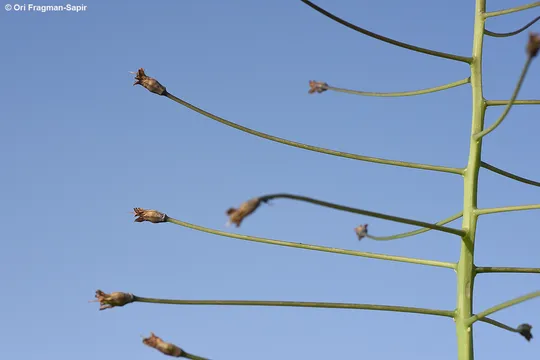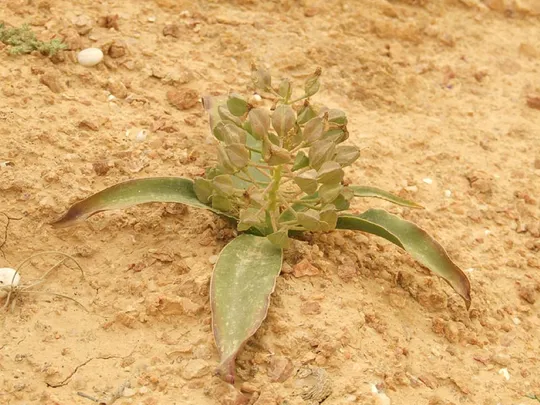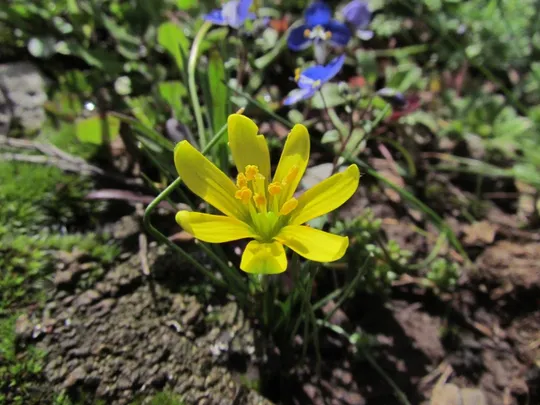Warburg's Roman Squill
Bellevalia warburgii
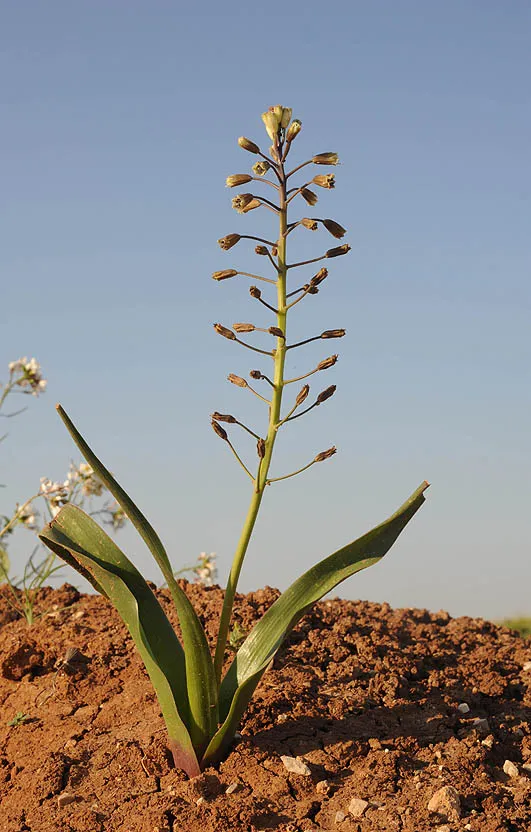
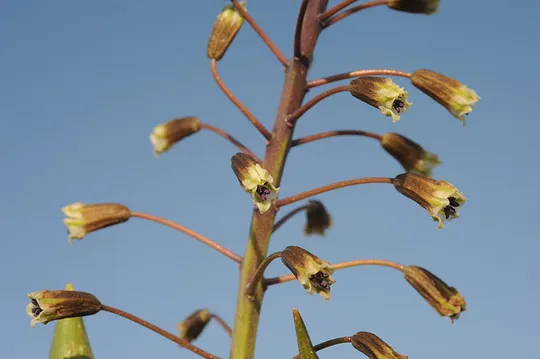
Bellevalia warburgii now grows in seven regions
in Israel: the southern Golan Heights, Lower Galilee, Jezreel Valley, Sharon, Shfela (Judean
foothills), Philistian Plain, and the western section of the northern
Negev. In the Flora Palaestina it is also noted from the Upper
Galilee (Malkiya) and the Jerusalem
mountains regions, but these are data from sixty years ago, and the species is probably extinct in these regions,
or it may be a case of mistaken identification. B. warburgii was not found in these areas, in the rare species survey. There are preserved specimens from a random
collection from a site north of Jericho in 1988 in the Herbarium.
Heavy soil in valleys, mostly in agricultural fields.
The genus Bellevalia belongs to the Scilla tribe in the Liliaceae (Hyacinthaceae) family. It is close to the genera Leopoldia, Hyacinthella
and Muscari. The
genus has 50
species, mostly found in the Mediterranean Basin, in
the western Irano-uranian region and the northern edges of the Saharo-Arabian region.
Its center of speciation is in the Middle East, where
46 species grow, as well as all the three sections
of the
genus: the Mediterranean scrubland
species group, e.g. B. flexuosa; the species group of fields and heavy soils, e.g. B. trifoliate; and the steppe group, that grows on steppes and mountains in the transition zone, e.g. B. stepporum
(Feinbrun, 1940).
B. warburgii, as mentioned above, is very close
to B. macrobotrys;
both share the same habitat and have a completely sympatric distribution in Israel.
B. warburgii
is similar to
B. eigii that grows in the Arava and on loess areas in the Negev. In the southern Philistean
Plain there are transitional forms between these two. Feinbrun collected Bellevalia specimens
above Tabha in the Kinarot Valley that
show transition forms between the B. warburgii and B.
macrobotrys.
·
There is no information on the total number of sites in which Bellevalia warburgii grows in Israel, nor about the situation of the Philistian Plain, Shfela (Judean foothills), and northern Negev and Golan sites. However, from the results
of a detailed survey of the Lower Galilee and the Jezreel Valley, a grim picture
emerges: in the Lower Galilee only two
sites survive (Tamra and Sde Ilan), and in the Jezreel Valley only two sites survive (Ram-On and the Kishon canal). The plant was not found
at all in the
Afula-En Harod area, from where the species was first collected and described.
·
No B. warburgii
sites are located in nature reserves.
· Its habitat – agricultural fields on heavy soil – is subject to intensive cultivation,
deep plowing and pesticide use.
The alluvial valleys on the coastal plain and in
the western Negev should
be surveyed to attempt to locate Bellevalia
warburgii populations. The systematic
relation between B. warburgii, B.
macrobotrys and B. eigii
should be studied. Two
populations located in different regions should be monitored.
Bellevalia warburgii
is endemic to
Israel, and up to the present has not been found outside its borders. It was recently recorded in the Egyptian
Flora (Boulos, 2005) from fields in Sinai, but the species was not found in the Sinai survey (Danin et al., 1985), and it may be that the
specimen was actually B. eigii. In
a monograph from 1940 Feinbrun recorded a questionable finding of B. warburgii from
eastern Turkey and Syria based on only two Herbarium
records. In the Flora of Turkey Davis explicitly wrote (1984) that the plant that Feinbrun referred
to belongs to B. macrobotrys. B. warburgii was
not included in the Flora of Syria (Mouterde, 1884-1966), and the same is true for the authors of the Conspectus
(Heller, 1984-1994).
B. warburgii is not considered endemic, because of Feinbrun's
reluctant determination that the species is not endemic to Israel and also grows in Syria and Turkey,
although recent studies indicate that the
species is, in fact, endemic only to Israel.
Bellevalia warburgii
is a geophyte endemic to
Israel, whose habitat
is fields in alluvial valleys. It is subject to
intensive cultivation. For the past sixty years, there has been a drastic decline in the number of its sites, and it has disappeared
from at least two regions and from the region from where it was first described
(En Harod).
Feinbrun,N. 1940, A Monographic study on the Genus Bellevalia. Palestine J. of Botany. Jer.Series,vol 1: 336-409.
Current Occupancy Map
| 1000 squre meter pixel | 5000 squre meter pixel | 10000 squre meter pixel | |
|---|---|---|---|
| number of observations | 0 | 0 | 0 |
| in total pixels | 0 | 0 | 0 |
| Family | Liliaceae |
| Classification | On the endangered species list |
| Ecosystem | Mediterranean |
| Chorotype | Eastern Mediterranean |
| Conservation Site | Sde Ilan in the North and Lakhish Area in the South |
| Rarity |
1
2
6
|
|---|---|
| Vulnerability |
0
3
4
|
| Attractiveness |
0
0
4
|
| Endemism |
0
4
4
|
| Red number |
1
4.7
10
|
| Peripherality | 0 |
| IUCN category | DD EW EX LC CR EN VU NT |
| Threat Definition according to the red book | Endangered |
 Based on:
Based on:
